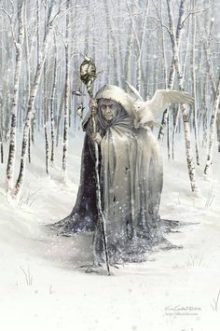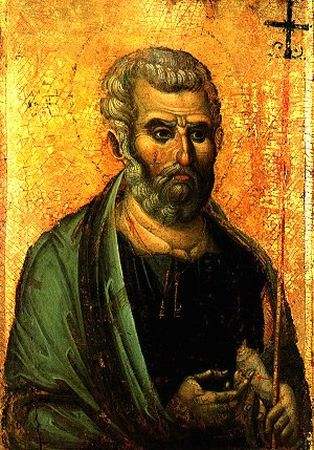Weather Watching
March 29 thru 31, the last three days of March, have a reputation for being stormy. Scottish folklore proposes that these three days were borrowed from April so that March might extend his power.
The Spanish story about the borrowing days is that a shepherd promised March a lamb if he would temper the winds to suit the shepherd’s flocks. But after his request was granted, the shepherd refused to deliver the payment. In revenge, March borrowed three days from April, in which fiercer winds than ever blew to punish the deceiver.
March borrowit from April
Three days, and they were ill:
The first was frost,
the second was snaw,
The third was cauld as ever’t could blaw.
~ Scottish proverb
From Almanac.com
It’s no accident that Groundhog Day and Candlemas are celebrated together, for both signify the triumph of light over darkness, spring over winter. Candlemas was originally a Celtic festival marking the “cross-quarter day,” or midpoint of the season. The Sun is halfway on its advance from the winter solstice to the spring equinox.
Candlemas is the Christianized name for Imbolc, and all of the church candles are blessed for the year. The Virgin Mary is also honored. Today, this holiday is chiefly connected to weather lore. Even our American calendar keeps the tradition of Groundhog Day, a day to predict the coming weather. The Groundhog Day tradition tells us that if the Groundhog sees his shadow, there will be six more weeks of bad weather. An old British rhyme instructed:
If Candlemas day be fair and bright,
Winter will have another flight.
If Candlemas day be shower and rain,
Winter is gone and will not come again.
We pagans see the God as an infant during the time of Imbolc, and he is nursing from the Goddess and growing in power. It is the time for banishing Winter. We gather together the greens that adorned our homes during the Yule, and then we add these greens to the Imbolc fire. We chant and dance saying “We banish Winter! We welcome Spring!”
We light candles in each window and let them burn throughout the night. It is also an appropriate time for dedicating yourself to the Pagan path and purifying your home. You can also make candles for the coming year and consecrate new ritual items.
The Christian church expanded this festival of light to commemorate the purification of the Virgin Mary and her presentation of the infant Jesus in the Temple. Candlelit processions accompanied the feast day.Since the traditional Candlemas celebration anticipated the planting of crops, a central focus of the festivities was the forecasting of either an early spring or a lingering winter.
Sunshine on Candlemas was said to indicate the return of winter. Similarly:
“When the wind’s in the east on Candlemas Day
There it will stick till the second of May.”
A bear brought the forecast to the people of France and England, while those in Germany looked to a badger for a sign. In the 1800s, German immigrants to Pennsylvania brought their Candlemas legends with them. Finding no badgers but lots of groundhogs, or woodchucks, there, they adapted the New World species to fit the lore. Today that lore has grown into a full-blown festival, with Punxsutawney Phil presiding. For all things groundhog, visit the folks at Punxsutawney and see what Phil is predicting this year.
Sources: Almanac.com and Rose Ariadne
 Là Fhèill Brìghde is the day the Cailleach gathers her firewood for the rest of the winter. Legend has it that if she intends to make the winter last a good while longer, she will make sure the weather on February 1 is bright and sunny, so she can gather plenty of firewood to keep herself warm in the coming months. As a result, people are generally relieved if February 1 is a day of foul weather, as it means the Cailleach is asleep, will soon run out of firewood, and therefore winter is almost over.
Là Fhèill Brìghde is the day the Cailleach gathers her firewood for the rest of the winter. Legend has it that if she intends to make the winter last a good while longer, she will make sure the weather on February 1 is bright and sunny, so she can gather plenty of firewood to keep herself warm in the coming months. As a result, people are generally relieved if February 1 is a day of foul weather, as it means the Cailleach is asleep, will soon run out of firewood, and therefore winter is almost over.
Visit The Powers That Be for more information about the Cailleach,
 January 25 is St. Paul’s day, a festival of the Roman and English churches in commemoration of St. Paul. This day is thought to be prophetic as to the weather of the year:
January 25 is St. Paul’s day, a festival of the Roman and English churches in commemoration of St. Paul. This day is thought to be prophetic as to the weather of the year:
“If St. Paul’s day be fair and clear, It doth betide a happy year; If blustering winds do blow aloft. Then wars will trouble our realm full oft; And if it chance to snow or rain, Then will be dear all sorts of grain.”
In Germany when the day proved foul the common people used to drag the images of St. Paul and St. Urban in disgrace to duck them in the river.
- On the day of the conversion of St . Paul, (January 25th,) the four winds wrestle and the winner will blow most of the year. (Belgium.)
- If it rains on St. Paul’s day there will be plenty of mushrooms. (Bohemia.)
Other omens and folklore for St Paul’s day include the following:
- Fire will not burn a man born on St . Paul’s day, but if a woman who was born on that day is burned, the wound will never heal.
- Interestingly, in Sicily, it doesn’t matter what day you were born on – if you are a man fire will not burn you, but if you are a woman it will not only burn, it will eventually cause your death!
On a more positive note:
- If you set your hens to hatch on Paul’s day, they will become good layers.
Found in: Encyclopedia of superstitions, folklore, and the occult
 There are two feast days in the year which are dedicated to St Peter. January 16, and June 29 (which is the feast of Saints Peter and Paul). What follows is lore and superstition surrounding St Peter’s day:
There are two feast days in the year which are dedicated to St Peter. January 16, and June 29 (which is the feast of Saints Peter and Paul). What follows is lore and superstition surrounding St Peter’s day:
- No building should ever be begun on St . Peter’s day. It will never prosper.
- The Wallachians say that on St. Peter’s day all roads are guarded by serpents, and whoever kills one on that day will be lucky all the year.
- If it rains on St. Peter and St. Paul, there will be plenty of mushrooms.
- If you set your hens to hatch on Peter’s and Paul’s day, they will become good layers.
- Make nests for the hens on St . Peter’s day, And many ‘s the egg that they will lay.
Collected from various sources
 The Halcyon Days occur on or around Dec 14, and last for approximately 2 weeks. The legend of these “days” centers around Halcyone, the wife of King Ceyx of Thessaly. It happened that King Ceyx was obliged to take a distant journey, far away over the seas. One night during his absence a very heavy storm came up, and the winds blew a gale.
The Halcyon Days occur on or around Dec 14, and last for approximately 2 weeks. The legend of these “days” centers around Halcyone, the wife of King Ceyx of Thessaly. It happened that King Ceyx was obliged to take a distant journey, far away over the seas. One night during his absence a very heavy storm came up, and the winds blew a gale.
Halcyone, being the daughter of the wind-god, Aeolus, knew well what her brothers, the Winds, could do, and passed the night in great terror. The next day she walked back and forth all day on the shore, longing for tidings of her husband’s ship, yet fearing to know what might have happened. She was almost beside herself, and did not know what to do,.
The Gods took pity on her, and that night, Somnus, the god of sleep and dreams, sent a dream to Halcyone, – a dream of a wreck at a place some distance down the coast. Early the next morning, Halcyone ran to the place of which she had dreamed. She saw floating beams, and something bright among them – something which shone like the king’s crown.
Having a sudden longing to go to this spot, she started forward, and immediately felt herself raised on wings and carried out over the tossing waves, for the Gods had changed her into a bird. With a loud cry, Halcyone flew to her Ceyx. Just as she lit on the floating beams, the bright crown became a crest of feathers, and the dead king a living bird with plumage like Halcyone’s own.
So, after all, Ceyx and Halcyone were not separated. The air was as fresh and the sunshine as bright as ever. They could still be happy as kingfishers. After this, every year, the two birds built a nest which floated on the sea. During the fourteen days that Halcyone sat brooding, there was never a breath of wind stirring, but the sea was as smooth as glass, for aeolus watched over the waters. From that time, days of fine weather and calm seas, in midwinter, have been called “halcyon days.”
An alternative version of the story is that she knew her husband had drowned, and overcome by grief, Halcyone flung herself into the ocean and drowned along with him. At which point, the Gods took pity on the pair and transformed them into kingfishers, or halcyons, with the power to still the stormy seas for 14 days near the time of the winter solstice while they hatched their young.








